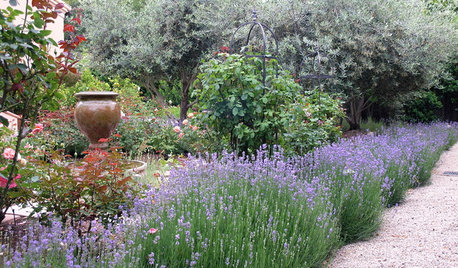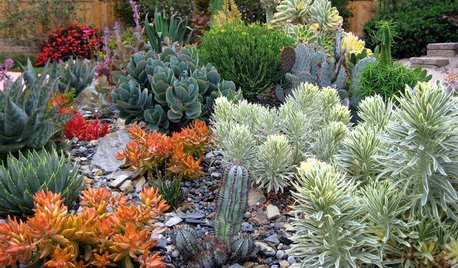Growing in Sand/Clay? Growing in other soils?
hoorayfororganic
17 years ago
Related Stories

GARDENING GUIDESGardening Solutions for Heavy Clay Soils
What’s a gardener to do with soil that’s easily compacted and has poor drainage? Find out here
Full Story
GARDENING GUIDESHow to Stop Worrying and Start Loving Clay Soil
Clay has many more benefits than you might imagine
Full Story
GARDENING GUIDESGrow a Beautiful Garden in Alkaline Soil
Got alkaline soil? Learn how to manage it and the many beautiful plants that will thrive in this ‘sweet’ soil
Full Story
COOL-SEASON CROPSCool-Season Vegetables: How to Grow Potatoes
This ever-popular tuber is a stalwart in spring and fall gardens and a staple in kitchens everywhere
Full Story
FARM YOUR YARDHow to Grow Vegetables in Containers
Get glorious vegetables and fruits on your patio with a pro’s guidance — including his personal recipe for potting mix
Full Story
EARTH DAYGrow a Beautiful Garden With Ecofriendly Greywater
Reducing home water waste means lower bills and a healthier planet. Here's how to set up a greywater home irrigation system that can help
Full Story
FLOWERSHerb Garden Essentials: Grow Your Own Fragrant Lavender
This do-it-all plant is ideal for almost any garden, and its uses are abundant around the home
Full Story
GARDENING GUIDESA Beginner’s Guide to Growing Succulents
Their easy-care reputation is well-deserved, but a little TLC will turn succulents into star plants
Full Story
GARDENING GUIDES10 Solutions for Soggy Soil
If a too-wet garden is raining on your parade, try these water-loving plants and other ideas for handling all of that H2O
Full Story
FARM YOUR YARD10 Easy Edibles to Grow in Containers
These herbs, vegetables and fruits are just as happy in a pot as they are in the ground
Full Story



pls8xx
maggiemae_2006
Related Discussions
Growing Grass in Clay Soil
Q
Berries - Will they grow in Clay Soil? Greenville area.
Q
Growing grass in red clay soil
Q
Growing salvia in clay soil?
Q
pls8xx
maggiemae_2006
pls8xx
maggiemae_2006
blutranes
hoorayfororganicOriginal Author
blutranes
hoorayfororganicOriginal Author
hoorayfororganicOriginal Author
kqcrna
gardengal48 (PNW Z8/9)
pls8xx
hoorayfororganicOriginal Author
blutranes
hoorayfororganicOriginal Author
hoorayfororganicOriginal Author
pls8xx
hoorayfororganicOriginal Author
fertilizersalesman
hoorayfororganicOriginal Author
blutranes
pls8xx
paulns
pls8xx
fertilizersalesman
blutranes
pls8xx
maggiemae_2006
kqcrna
luvorganic
blutranes
blutranes
pls8xx
Kimmsr
maggiemae_2006
pls8xx
blutranes
bpgreen
blutranes
bpgreen
blutranes
blutranes
maggiemae_2006
blutranes
maggiemae_2006
blutranes
althea_gw
blutranes